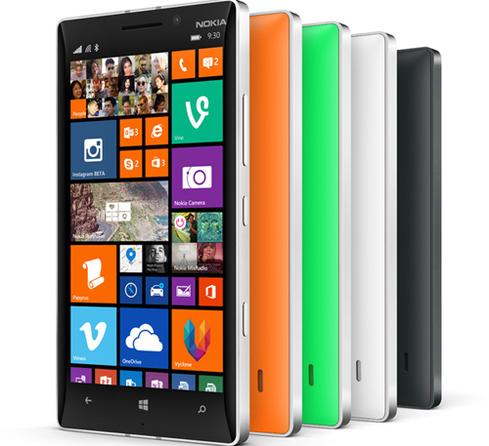Nokia powers sophisticated Lumia 930 and budget Lumia 630 and Lumia 635 smartphones with Microsoft's Windows Phone 8.1 operating system.


Lost Smartphone? 6 Free Tracking Apps
Lost Smartphone? 6 Free Tracking Apps (Click image for larger view.)
Nokia joined Microsoft on stage during the Build developer conference in San Francisco to show off new hardware. The three smartphones from Nokia all run Windows Phone 8.1, which was the big star of day one's keynote. The devices are compelling in that they cover both the style-seeking and the budget-conscious buyer.
First up is the Lumia 930. This is a variation of the Lumia Icon, which is sold by Verizon Wireless. It is the latest Windows Phone to include a 1080p full HD display. It measures five inches diagonally, which puts the 930 on par with competing smartphones, such as the HTC One, LG G2, and Samsung Galaxy S4. It is an OLED panel and uses Nokia's ClearBlack technology to improve contrast and outdoor viewing. It is protected by Gorilla Glass 3, and is sensitive enough to be used when wearing gloves, something field techs will appreciate.
A quad-core processor from Qualcomm is under the hood: the venerable Snapdragon 800, with each of the four cores clocked at 2.2 GHz. The processor is accompanied by 2 GB of RAM and 32 GB of internal storage. The 930 has a 2,240 mAh battery. The screen uses a PureView 20-megapixel sensor with Zeiss optics and optical image stabilization. The lens has a wide aperture of f/2.4, and the 930 adds dual LED flashes to improve images and video.
[Twitter mobile users get new tagging options. Read Twitter Photo Tagging: 4 Facts.]
Connectivity options run the gamut. Naturally, the 930 supports worldwide LTE 4G networks. Other radios include dual-band WiFi, secure NFC, Bluetooth 4.0 Low Energy, aGPS, and GLONASS. Sensors abound, such as a 3D accelerometer, proximity sensor, magnetometer, ambient light, and gyroscope. The Lumia 930 is a high-end device.
The Lumia 630 and Lumia 635 are sister devices aimed at first-time smartphone buyers. They share nearly all features, and vary only in their support for various cellular networks. The 635 will reach AT&T, T-Mobile, and MetroPCS this summer. It includes a 4.5-inch ClearBlack LCD screen and relies on a 1.2 GHz quad-core Qualcomm Snapdragon 400 processor. The processor is mated with 512 MB of RAM and 8 GB of storage. The device supports microSD cards up to 128 GB, which makes up for the miserably stingy internal storage. The 635 has a 5 megapixel main camera and a 1.3 megapixel user-facing camera. Pricing? Nokia says $189 for the Lumia 635, without a contract.
All three devices run Windows Phone 8.1; in fact, the Lumia 630 and 635 will be the first smartphones to ship from the factory with Windows Phone 8.1 on board. Microsoft's latest mobile operating system offers a number of usability tweaks that make it more appealing, such as improved notifications and lock screen, better security controls for businesses, more customizable user interface elements, and more calendar views.
In addition, the new Nokia Windows Phone devices come with Nokia's well regarded custom software. There's Nokia StoryTeller for piecing together slideshows; Here Maps with Livesight for augmented reality search; MixRadio for free music streaming; Nokia Beamer for sharing the phone's content with nearby screens; and Cinemagraph for creating a blend of photos and animations.
The Nokia Lumia 930 and 630/635 will be offered in a variety of colors.
IT organizations must build credibility as they cut apps, because app sprawl is often due to unmet needs. Also in the App Consolidation issue of InformationWeek: To seize web and mobile opportunities, agile delivery is a given. (Free registration required.)
About the Author(s)
You May Also Like







